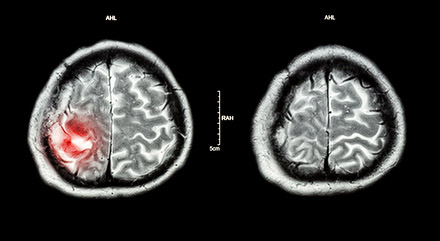Did you know? Sudden cardiac arrest claims over 3 million lives each year across the…

Every 40 seconds someone, somewhere suffers a stroke in the world. Every 3 to 4 minutes someone dies of a stroke, yet if we can spot the warnings signs early and get medical help then we might save a life, or prevent long term disability.
A stroke effects your brain because it interrupts the blood supply which provides oxygen to the brain cells. Without oxygen, brain cells are damaged and start to die. For this reason, it is extremely important to recognise the symptoms quickly and stem the attack. Symptoms usually appear suddenly.
To help you remember how to recognise the signs of a stroke you can use F.A.S.T.
F – Facial Drooping
Look for one side of the face or mouth drooping. Ask the person to smile.
A – Arm Weakness
Is one arm numb or weak? Ask the person to raise both arms. Does one arm drift downward?
S – Speech Difficulty
Is the casualties speech slurred? Is it hard for them to speak or be understood? Ask the casualty to repeat a simple sentence like “The cat sat on the mat”.
T – Time to call
If the person shows any of the above symptoms do not delay, call 999 for an ambulance. Even if the symptoms go away, still call an ambulance.
F.A.S.T.
The quicker you respond to the symptoms and get professional help, the better the outcome.
The most common type of stroke is called an Ischemic, this occurs in seventeen out of twenty cases. An Ischemic stroke is caused when a blood clot blocks an artery, this restricts the amount of blood and oxygen that can reach the brain. This happens due to furring and narrowing of the arteries, but sometimes a blood clot will form some where else in the body and this goes into the bloodstream and then the arteries near to the brain.
A mini stroke or transient ischemic attack (TIA) can occur with similar symptoms such as sudden numbness, dimming of vision, mental confusion but resolve within a few minutes to 24 hours. You normally recover completely from a TIA but it is important that you see your doctor urgently so he can advise you on how to reduce the risk of a full stroke. Take it as a warning and do something…do not leave it! Remember, strokes are largely preventable, treatable and beatable.
The symptoms of a stroke may vary from person to person depending upon which part of the brain is affected. The functions of the different parts of the body are controlled by different parts of the brain. Confusion and severe headaches may occur or even loss of consciousness in more severe cases.
Symptoms can often improve after a few weeks, when the swelling around the damaged part of the brain subsides. The symptoms can gradually get better with rehabilitation and treatment, but some people are left with a degree of disability after a stroke which is dependent on the extent of the stroke damage.

